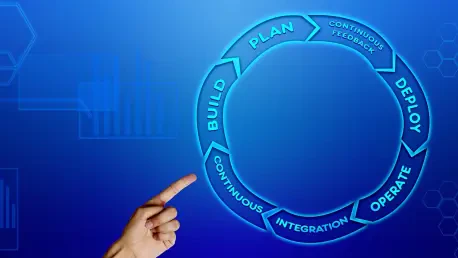Listen to the Article
The Software Development Life Cycle is crucial for planning, designing, developing, and maintaining software systems. It provides a clear structure that helps both developers and stakeholders work together to achieve project success and meet user expectations. Whether you are building a small application or a large enterprise solution, understanding its phases and methods is paramount for delivering quality software on time and within budget. Here is all you need to know about it.
What is It, and Do You Need It?
The software development life cycle aims to produce software that meets or exceeds customer expectations. It should also launch on time and at a reasonable price. Although the methodology and its implementation lessen the project risks, it requires detailed planning and expert execution, as the developers undertaking it use high standards.
Overall, this strategy allows the organization to break down the production process into smaller, manageable phases that make it easy to allocate resources, manage the initiative, and control the product quality. The following segment dives deeper into these phases and their methodology.
The Hidden Power of a Systematic Approach
This framework has a lot of benefits particularly when it comes to managing software development projects that are likely to undergo some changes due to fluctuating market requirements, technology enhancement, as well as the collaboration of various teams. The steps are:
Transparency: Stakeholders can follow the entire process, and view it in each stage, which improves their satisfaction.
Risk Management: Earlier indication and mitigation of risks will decrease the probability of project failure.
Optimized Resources: Ensures that time, budget, and talent are employed efficiently.
Customer Satisfaction: The key contribution to this point is the company’s ability to meet deadlines, have high-quality software, and build trust with investors using this strategy.
Increase Flexibility: Enables coders to integrate new parameters and technologies based on real-time feedback from users of the program in the market.
A Step-by-Step Guide from Planning to Maintenance
A software development life cycle includes several important phases, each containing specific tasks and deliverables for building, or the eventual decommissioning of programs. Organizations use various techniques but follow these dependable steps to create reliable software products:
Phase 1: Planning
Every cycle kicks off with the planning phase. This is where companies figure out exact goals and budgets and set the groundwork for the project ahead. Here is a full breakdown of this phase:
Collecting requirements directly from stakeholders, who include customers, internal staff, and outside professionals.
Evaluating the feasibility of the initiative focuses on cost evaluation as well as resource allocation and deadline determination.
The project team sets clear limits by defining specific goals for the undertaking.
The development team confirms a plan that would fulfill the schedule for each maturation phase.
Phase 2: Feasibility Analysis
The feasibility analysis following the planning phase determines financial viability and technical potential by addressing:
Technical reliability: A thorough breakdown must confirm that all technological needs will be achievable.
Financial feasibility: The project’s financial aspects must establish profitability by assessing costs.
Risk analysis: Uncovers possible threats that might affect both quality standards and the completion period.
Phase 3: System Design
During this phase, software developers use gathered requirements to construct workable programming architectures for the code and choose the design level:
High-level design: The format at this level shows an overview of the entire system architecture.
Detailed design: Includes specifics like database structure, user interfaces, and data flow.
Prototypes: The team may build prototypes for client feedback before creating the final design plan.
Phase 4: Implementation
During the implementation stage, programmers write and create the software code. They construct source code by adhering to the design specifications. This typically includes:
Splitting production into smaller, actionable steps for better handling.
Programming must follow standard practices throughout coding.
Audits happen regularly to check the alignment between quality standards and project requirements.
Phase 5: Testing
Software testing is vital since it allows verification that the program functions correctly and fulfills all user needs. The testing phase involves:
Unit trials: Each separate building block goes through evaluation to make sure the foundations of the end products are solid.
Integration testing: Aims to verify that various modules operate accordingly once combined into a larger unit.
System validation: Checks that the iterations contain all original specifications.
User acceptance: Real users perform tests to prove the functionality and usability of the software.
Phase 6: Deployment
Deployment becomes possible after conducting successful testing that eliminates critical bugs. This involves:
Readying software for use in operational settings.
Beta testing or carrying out a pilot launch with a control group.
The process ends by completing documentation and finalizing training materials.
Phase 7: Maintenance
After its deployment, the program requires constant support and maintenance services. These procedures include:
Bug fixes after the release.
Updates like new performance features or further enhancements.
Security updates for emerging threats.
Life Cycle Models
Software development life cycle templates offer different approaches to program creation, each with unique benefits and corresponding drawbacks. The selection of appropriate models depends on project size, complexity, and requirements. Take your pick:
Waterfall
This approach follows a straight line with phases that must be completed successively for market activation. This strategy is best for developing small initiatives with established requirements.
Pros: Simple, easy to understand and manage; suitable for assignments with fixed prerequisites.
Cons: Rigid and inflexible, with little room for changes once a phase is completed.
Agile
With agility in focus, code goes through short, manageable cycles known as sprints, which operate in iterative increments. It’s defined by a collaborative framework that is highly responsive to changes.
Pros: Flexibility, frequent releases, and close collaboration with stakeholders.
Cons: Requires careful communication and project management to avoid scope creep.
Iterative
Using the iterative format, developers break the operation into smaller segments, producing functional software iterations. Teams can easily improve the software based on feedback after each development stage.
Pros: Allows for early detection of issues and adjustments.
Cons: This can lead to “technical debt” if issues are not resolved in earlier versions.
V-Model
The V-Model includes trials in each coding phase, allowing for early problem discovery.
Pros: Emphasizes rigorous testing and validation.
Cons: Can be too rigid for complex projects.
DevOps
Through DevOps, teams operate as one unit while following principles of continuous integration and deployment for program creation and system management. Coding moves fast because it collects steady feedback throughout the entire process.
Pros: Faster development cycles, improved collaboration, and streamlined deployments.
Cons: Requires specialized tools and staff, which can be expensive for smaller enterprises.
Security at Every Step: The DevSecOps Way
Over the last few years, most companies have incorporated security into every part of the system’s lifetime. Earlier, antivirus tests were performed as a mere extra stage that took place at the end of the development process. Security issues were often present but they were overlooked most of the time. Today, the DevSecOps model tests for malware from penetration tests to code reviews.
Better Code, Better Projects
Implementing software development life cycle has the following advantages:
Structure improvements that provide and enable management and achievement of important tasks that are associated with progress and deadlines.
Using standardized methods means companies are able to come up with better outputs that are easy to reproduce several times.
Serves as a set-up to alert of any issues likely to occur hindering the accomplishment of assignments within a shorter time, at affordable cost.
Quality assurance lays down practices to ensure that software receives thorough testing to the extent that it meets the requirements of the customers.
Conclusion
To create high-quality software that meets both functional and non-functional requirements, it is important to follow a clear engineering process. It helps coders reduce systematic risks and improve cooperation, leading to better use of resources, and helping to deliver products on time and within budget. Your choice between Waterfall, Agile, or DevOps should depend on how well your software development life cycle design fits into your project requirements and team dynamics.









